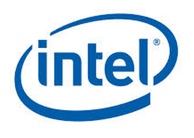Intel forms 'Internet of Things' division


Chip giant Intel is setting its sights on the connected devices market as a future revenue source.
Connected devices are predicted by many to be the next big thing in technology. The idea is that everyday devices such as lightbulbs, thermostats, bathroom scales and even appliances such as refrigerators will all be connected to create an 'Internet of Things,' a technology which leverages wireless connectivity and cloud computing.
And Intel wants to make sure that it's there.
Intel's new 'Internet of Things Solutions Group' will be headed by Doug Davis, general manager, and will report directly to the company's chief executive, Brian Krzanich.
Featured
"Krzanich is saying, 'I want a higher level of focus on this to help us grow it and put the level of attention on it that it deserves,'" Davis told Reuters.
Intel is a company that dominated the desktop, notebook, and server processor markets for decades, but was slow to position itself for the shift from the PC to the post-PC era, allowing companies such as Qualcomm and Nvidia to not only gain a foothold but also establish dominance inside smartphones and tablets.
It's clear that Intel doesn't want to be left behind if the 'Internet of Things' takes off.
Intel has also been working on a range of low-power chips for wearable devices, and even ingestible biomedical. At the core of this are Intel's Quark SoC X1000 and E3800 Atom silicon.
The new group will combine Intel's existing business which is focused on chips for commercial and industrial devices with Intel's Wind River subsidiary, which sells software for commercial and industrial devices.
"We're pulling together a couple of pieces that are already doing well and we want to accelerate those efforts. This creates a primary focus around 'Internet of Things,'" Davis said.